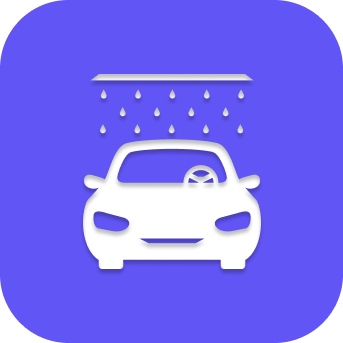Launch your own Uber for Nanny & Caretaker booking app with this ultimate development guide featuring essential features, and revenue models.
In a world where safety, reliability, and convenience define decision-making, parents and families are turning to technology to find trusted caretakers and nannies. From daily childcare to elder support, the modern family wants professional help but only when it’s verified, traceable, and transparent.
That’s where nanny and caretaker booking apps are reshaping the service industry. These platforms connect families with qualified caregivers instantly just like Uber connects riders with drivers. Through background verification, ratings, reviews, and live tracking, they replace uncertainty with confidence.
This guide explores how you can build a nanny or caretaker booking app that earns user trust while offering seamless usability. We’ll cover market trends, business models, must-have features, development costs, and how technology itself becomes your strongest trust signal.
Why Trust Is the Core of the Care Economy
Unlike other on-demand services, childcare and caretaker platforms involve the most personal form of responsibility taking care of someone’s loved one. Trust isn’t optional here; it’s the foundation of your entire business model.
Parents and families want assurance that the person entering their home has been properly verified, trained, and rated. They expect transparency at every stage from background checks to payment and real-time tracking.
Technology enables this trust. Through digital identity verification, live GPS tracking, in-app communication, and transparent review systems, apps can turn a high-risk decision into a reliable, repeatable experience.
Market Opportunity: Why Now Is the Right Time
The global demand for nannies, caretakers, and domestic helpers is increasing rapidly. According to recent industry reports, the on-demand home care market is projected to cross $100 billion by 2025, fueled by dual-income households, urban migration, and aging populations.
Parents need trusted childcare. Families with elderly members require qualified caregivers. And in most regions, the informal labor sector lacks organization creating a huge opportunity for verified digital platforms.
Apps like Care.com, UrbanSitter, and Helpr have already proven this model. The next generation of platforms will go further combining AI-driven trust systems, real-time verification, and predictive scheduling to create a smarter, safer experience.
Business Models for a Nanny & Caretaker App
Before development, define how your platform will function and generate revenue. Here are proven models:
1. Marketplace Model
Connect users with independent nannies and caretakers. Your platform charges a commission (10–25%) on each booking. This model scales easily across cities.
2. Subscription Model
Offer families monthly or yearly memberships to access verified professionals, premium support, or discounted hourly rates. This ensures recurring revenue.
3. Agency / In-House Model
Hire and manage your own team of verified nannies and caretakers. This provides higher quality control but demands more operational investment.
4. Lead Generation Model
Charge caregivers or agencies for verified leads instead of handling transactions directly. It’s simpler but gives less control over service quality.
The most successful startups combine the marketplace and subscription models for balanced scalability and steady income.
Building Trust Through Technology
Trust must be designed into your app from day one. Here’s how technology becomes your most valuable ally:
1. Verification and Background Checks
Integrate digital KYC (Know Your Customer) and police verification APIs. Require ID proof, certifications, and references from every caretaker or nanny before approval.
2. Real-Time Tracking
Live GPS tracking reassures families that caregivers are punctual and transparent. It’s especially critical for elderly or child pickups.
3. Transparent Ratings and Reviews
After every booking, allow both parties to rate and review each other. Authentic, two-way feedback ensures accountability and quality improvement.
4. Video Verification and Interviews
Before hiring, let parents conduct short video calls or interviews through the app. It builds personal connection and reduces uncertainty.
5. AI-Powered Matching
Use AI algorithms to suggest the most suitable caregivers based on proximity, experience, language, child’s age, or medical training.
6. Secure Payments and Contracts
All transactions should happen within the app. Offer digital contracts and insurance protection to avoid disputes and build confidence.
When users feel every layer of your system is secure, they return and they refer others.
Core Features of a Nanny & Caretaker App
A successful platform depends on clear, role-based functionality. Let’s look at what each user type needs:
For Families / Parents
- Simple onboarding and profile setup
- Advanced search filters (skills, experience, hourly rate)
- Real-time availability calendar
- Instant or scheduled booking
- In-app chat and video call
- Live tracking and emergency alert feature
- Digital payments and invoices
- Review history and favorites list
For Nannies / Caretakers
- Profile creation with document uploads and verification
- Job requests and calendar management
- Real-time navigation to client location
- Automatic time tracking and earning summary
- Secure in-app wallet and payout management
- Review management and ratings visibility
For Admin
- Dashboard for managing users, bookings, and payments
- Verification and approval system for caregivers
- Analytics for performance and earnings
- Commission and subscription management
- Dispute resolution and refund processing
- Push notifications and offers management
Monetization Strategies
A nanny and caretaker app can generate revenue through multiple channels:
- Commission-based earnings from each completed booking.
- Subscription plans for premium members.
- Advertising or featured listings for top-rated caregivers.
- Service fees for instant or emergency bookings.
- Partnerships with daycare centers, eldercare agencies, or hospitals.
Building trust increases conversion and higher trust means users are willing to pay for premium experiences.
Overcoming Key Challenges
Every platform that deals with human service faces unique challenges. Here’s how to handle them effectively:
1. Ensuring Quality & Safety:
Implement multi-stage verification, training, and periodic background updates.
2. Balancing Supply & Demand:
Start local, then expand once you have stable user growth.
3. Legal & Liability Issues:
Work with insurance providers to cover incidents and build digital contracts into every transaction.
4. Retention & Loyalty:
Reward consistent caregivers and long-term families through points, discounts, or premium badges.
5. Competition:
Differentiate your platform through specialization newborn care, elderly care, or medical-certified nannies.
Marketing & Growth Strategies
Your marketing strategy should revolve around trust, safety, and family convenience.
Start with local SEO optimize for terms like “trusted babysitters in [City]” or “certified nannies near me.” Encourage reviews and testimonials to boost rankings.
Use social media storytelling share real success stories, caregiver highlights, and parent testimonials to humanize your brand.
Partner with schools, hospitals, and parenting communities to build credibility. Offer referral bonuses to existing users.
For fast adoption, launch introductory offers and first-booking discounts while maintaining strict verification standards.
Future Trends in Caregiver Platforms
The next era of nanny and caretaker apps will go beyond booking it’ll be about intelligent care.
Expect innovations like:
- AI-driven emotional insights during sessions.
- Integration with smart home cameras for parent visibility.
- Subscription-based family care ecosystems (child + elder care).
- Predictive scheduling using machine learning.
- In-app training and certification for caregivers.
By embracing these technologies early, your platform can lead the evolution of trustworthy digital caregiving.
Quick Takeaways
Start local and build your brand around verified trust.
Use technology not just people to ensure safety and accountability.
Adopt a hybrid business model for steady revenue.
Leverage partnerships with daycare and eldercare organizations.
Invest consistently in transparency, reviews, and user experience.
Conclusion
Launching a Nanny & Caretaker Booking App isn’t just about technology it’s about creating confidence in one of life’s most sensitive services. Parents and families need assurance, while caregivers seek reliability and respect.
By building trust through thoughtful technology verification, transparency, and communication your platform can bridge that gap perfectly.
Start with a strong MVP, emphasize safety and experience, and let data-driven design do the rest.
In 2025 and beyond, the apps that win won’t just offer convenience they’ll offer peace of mind.























